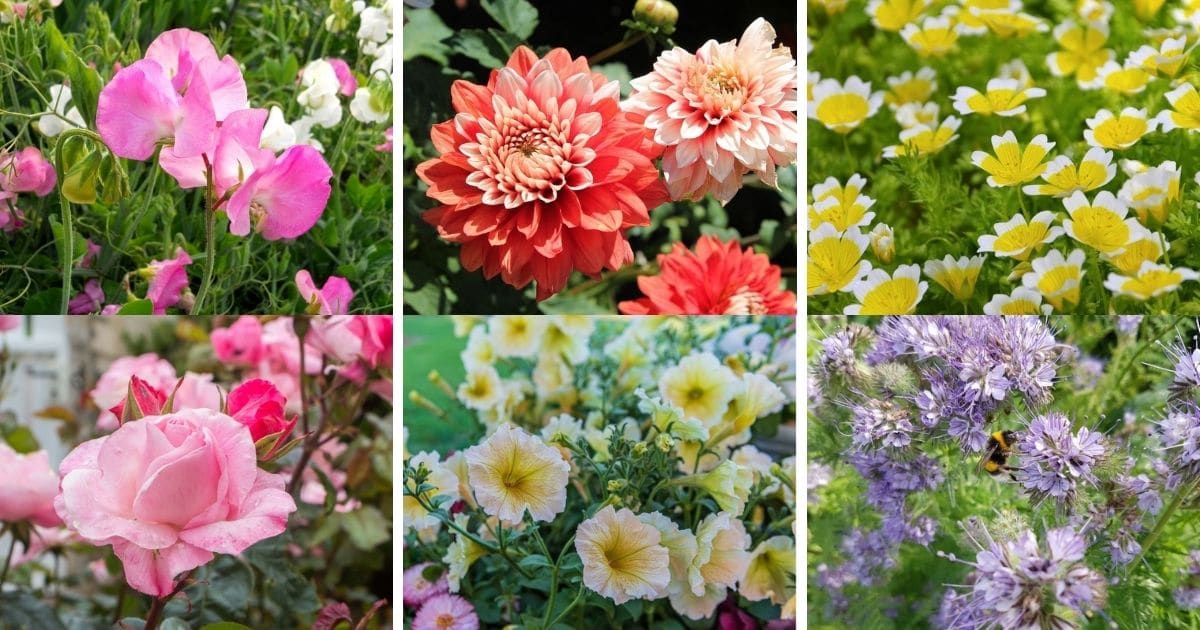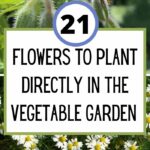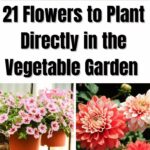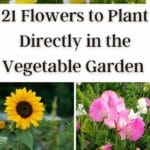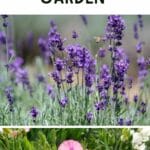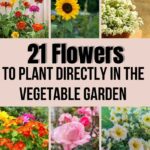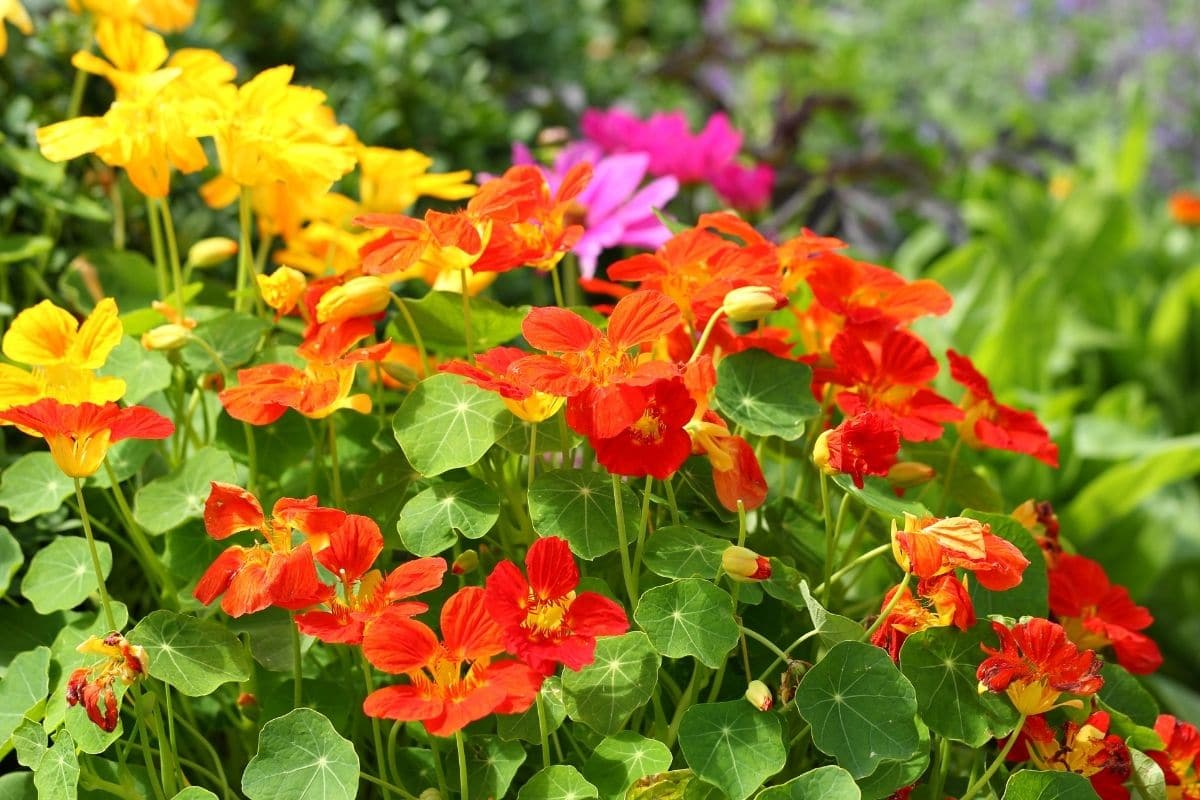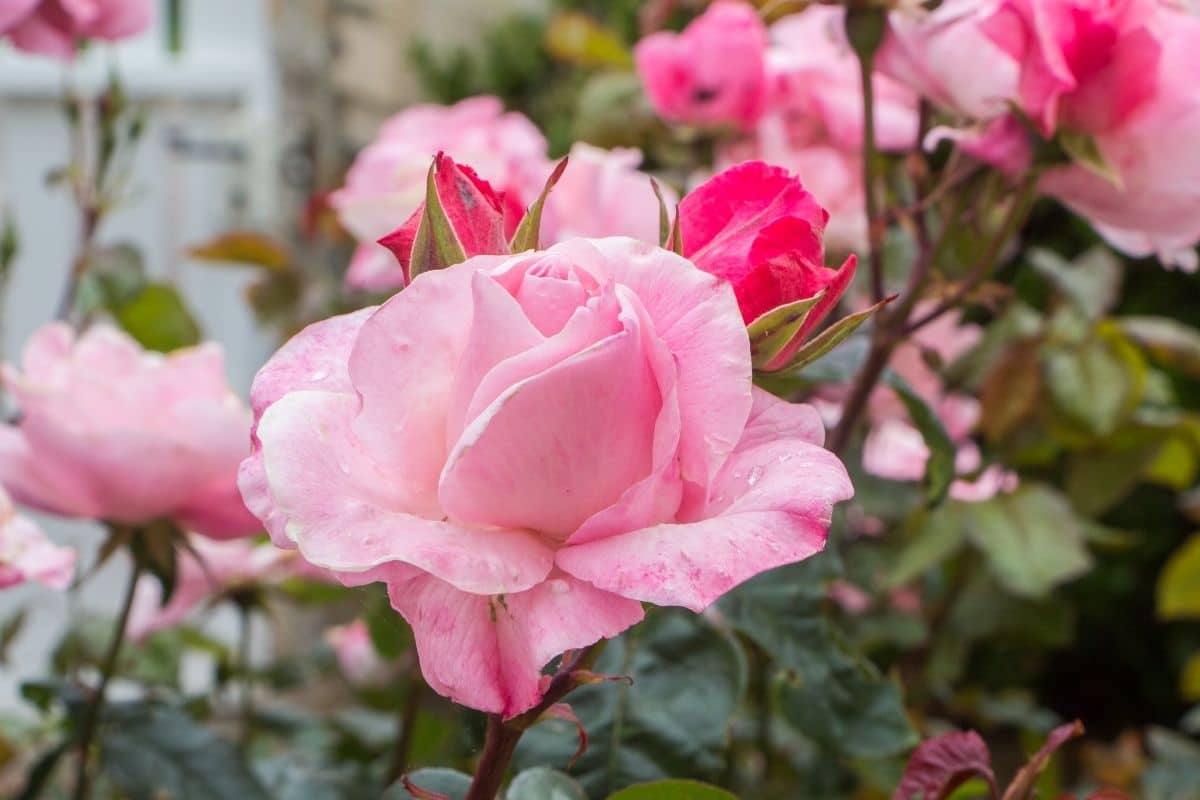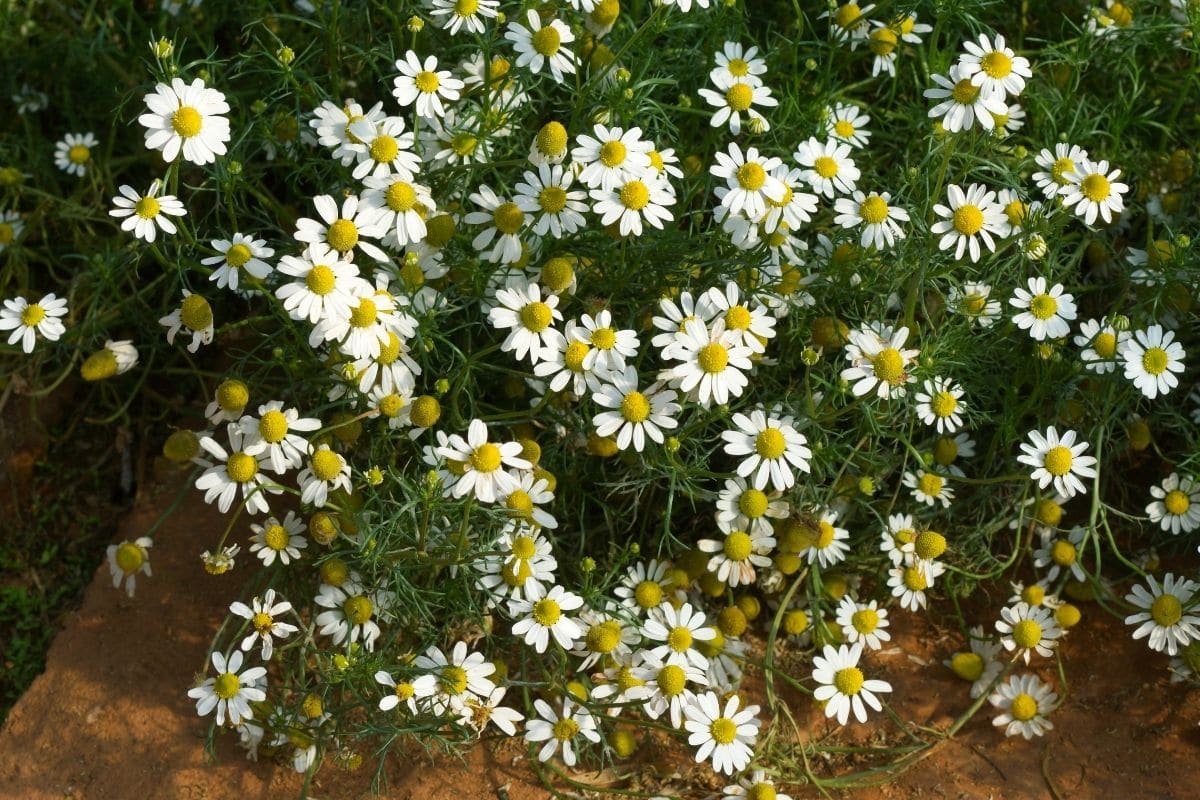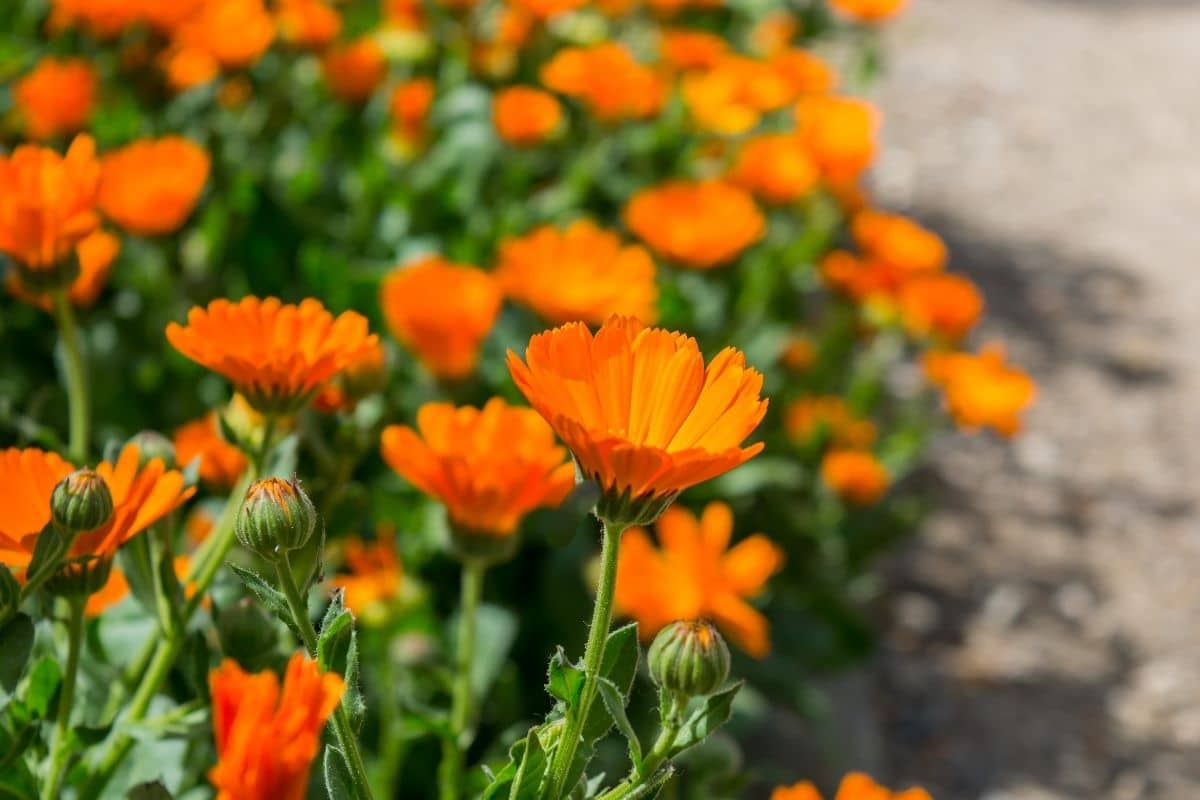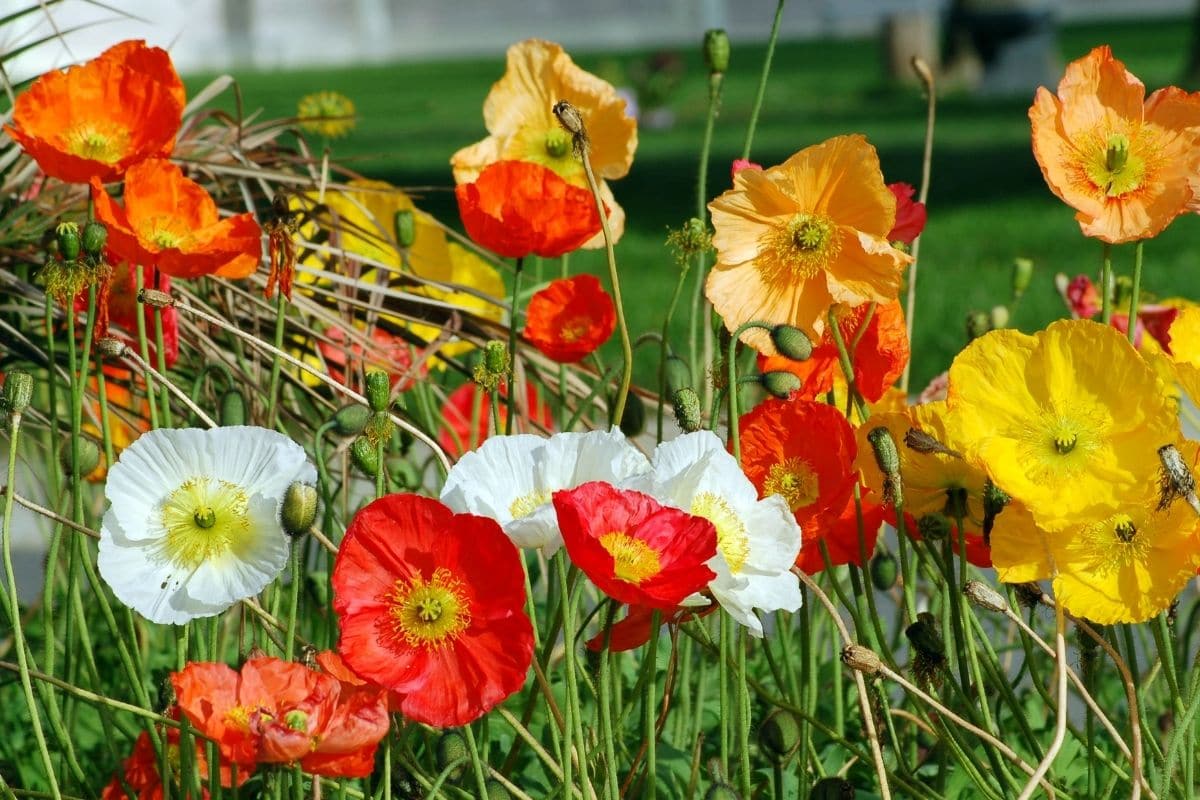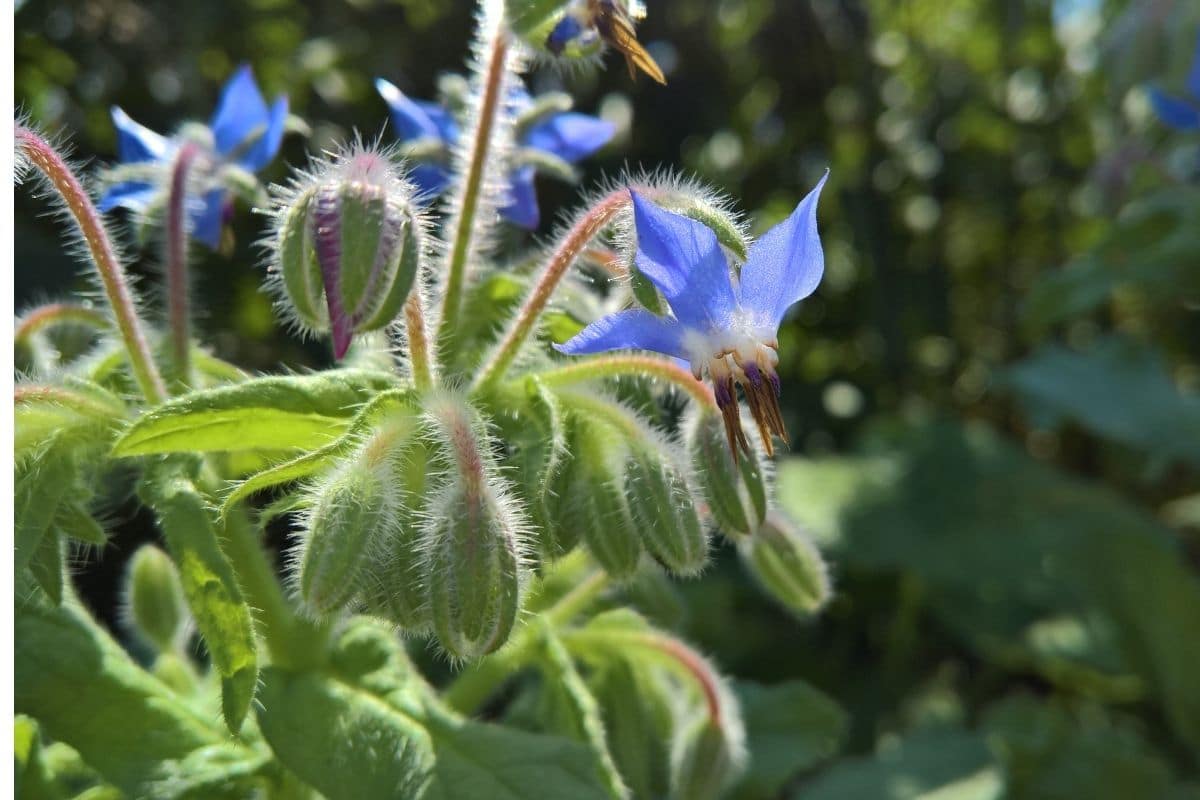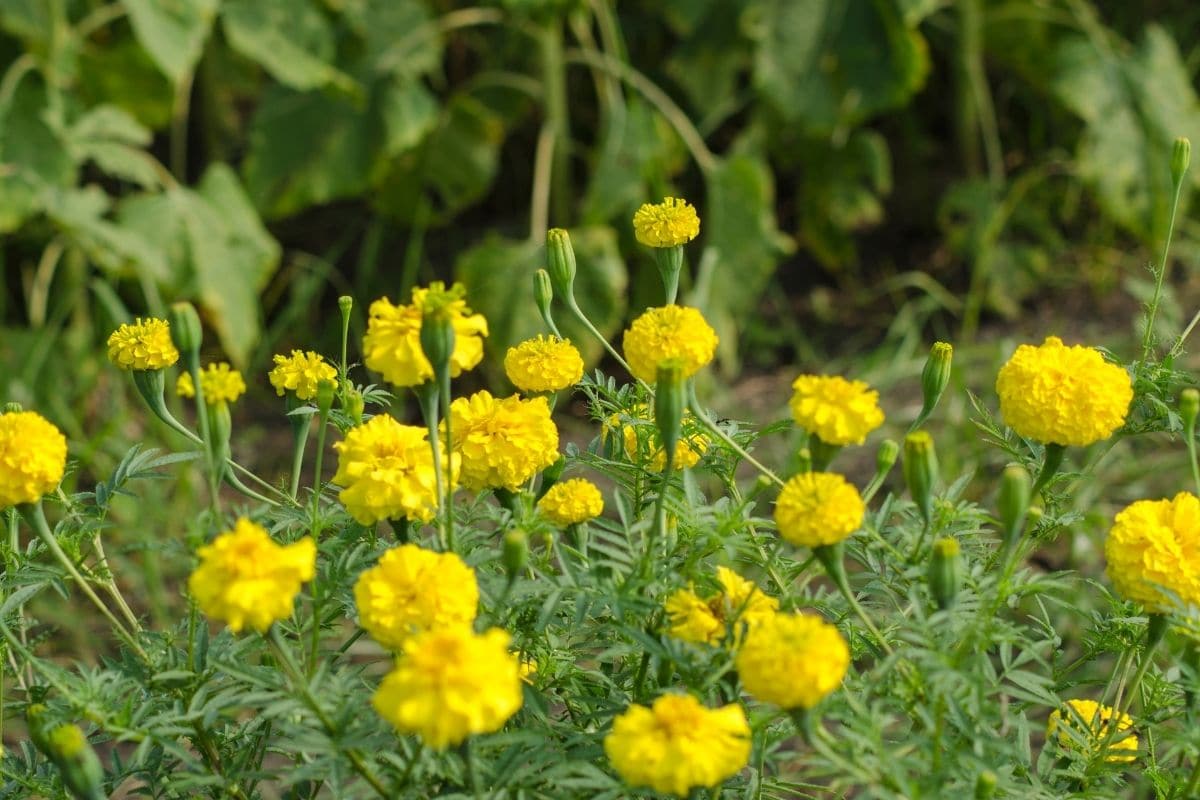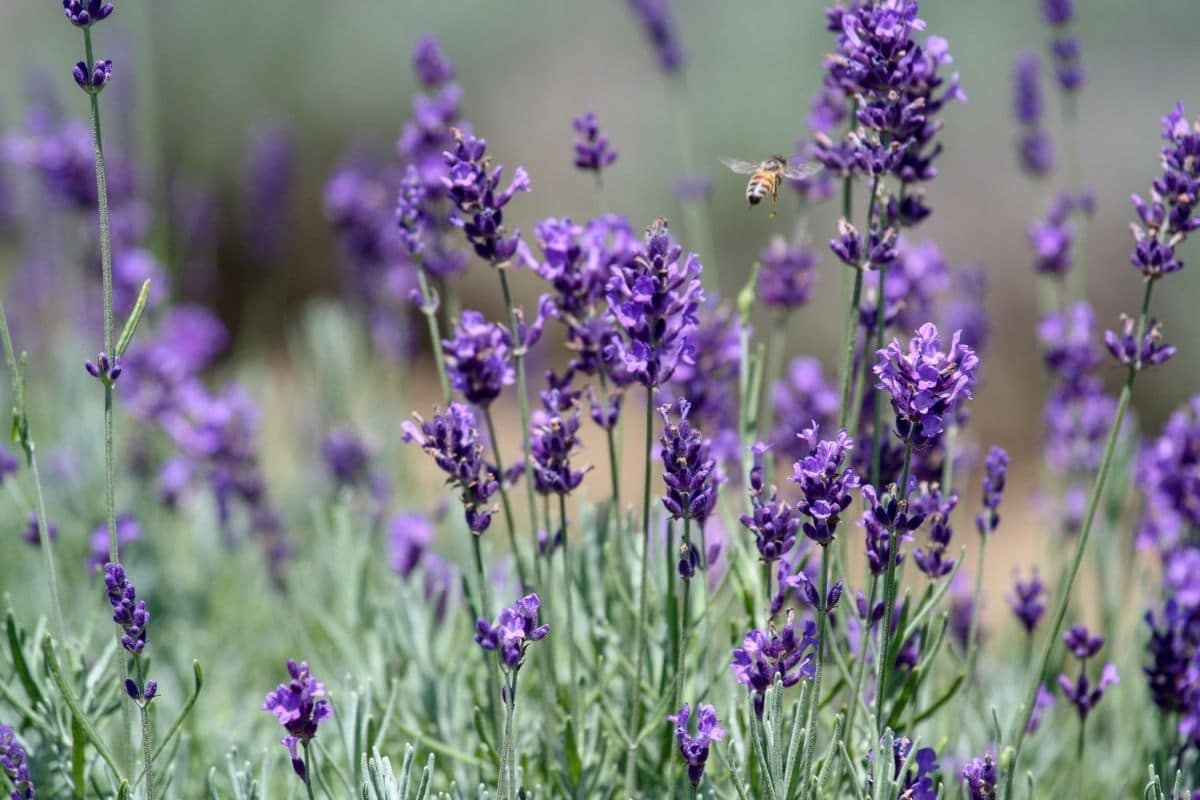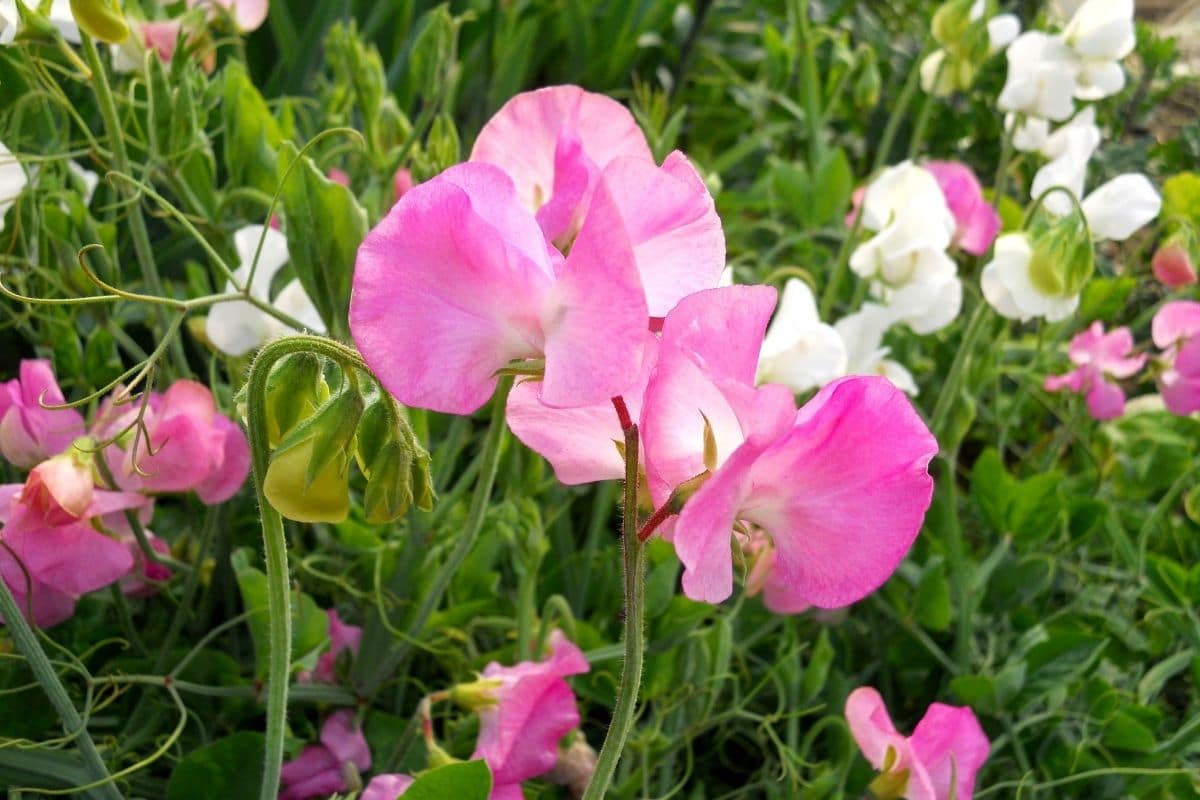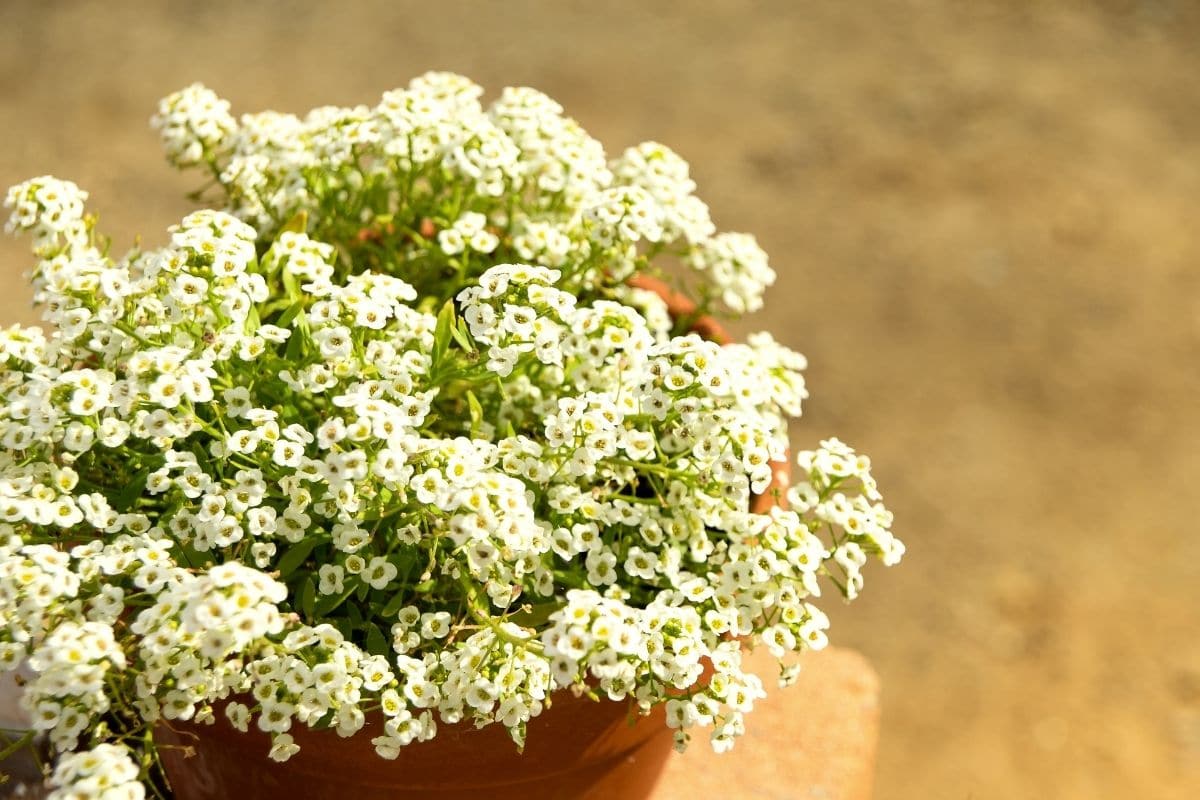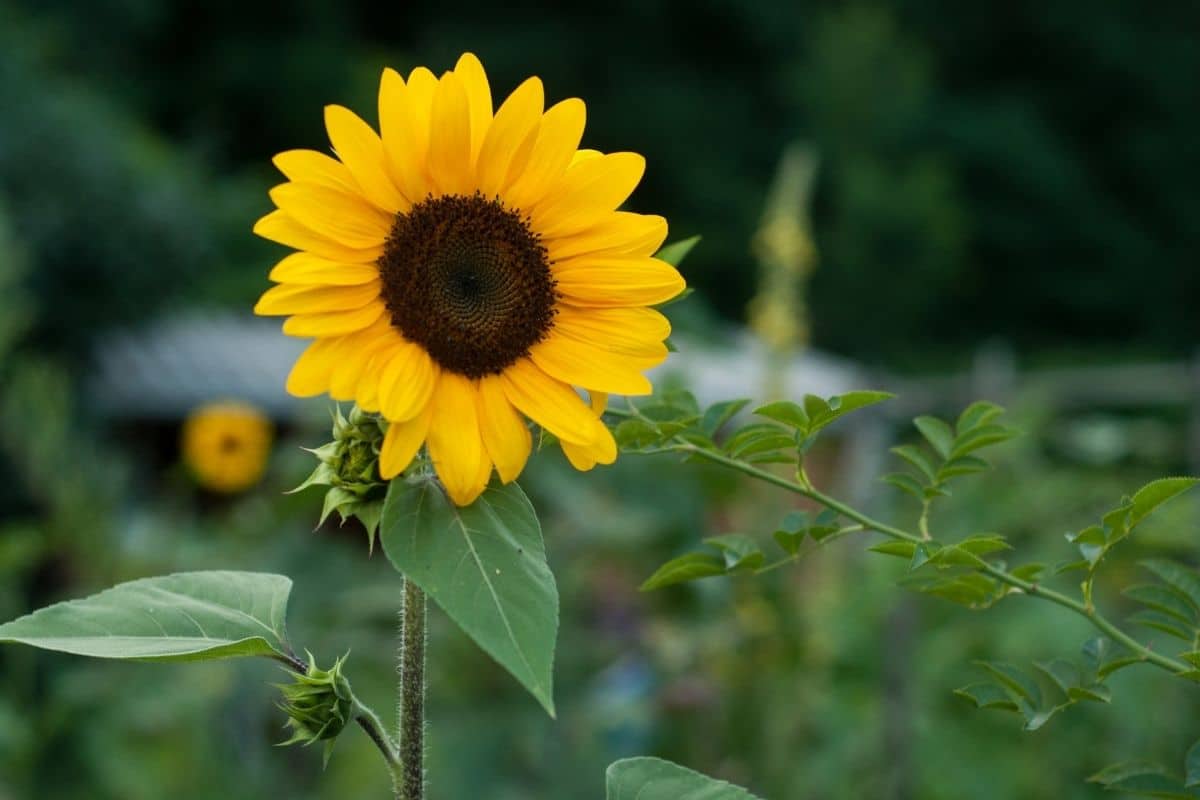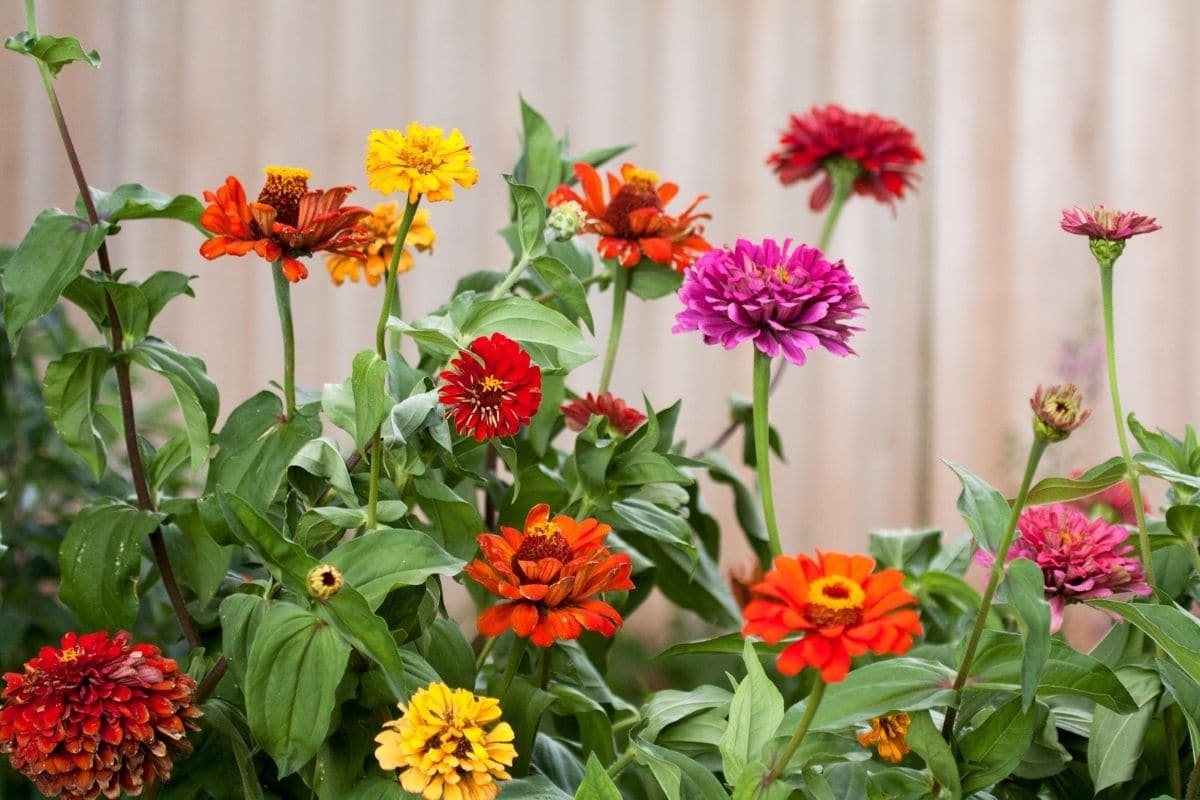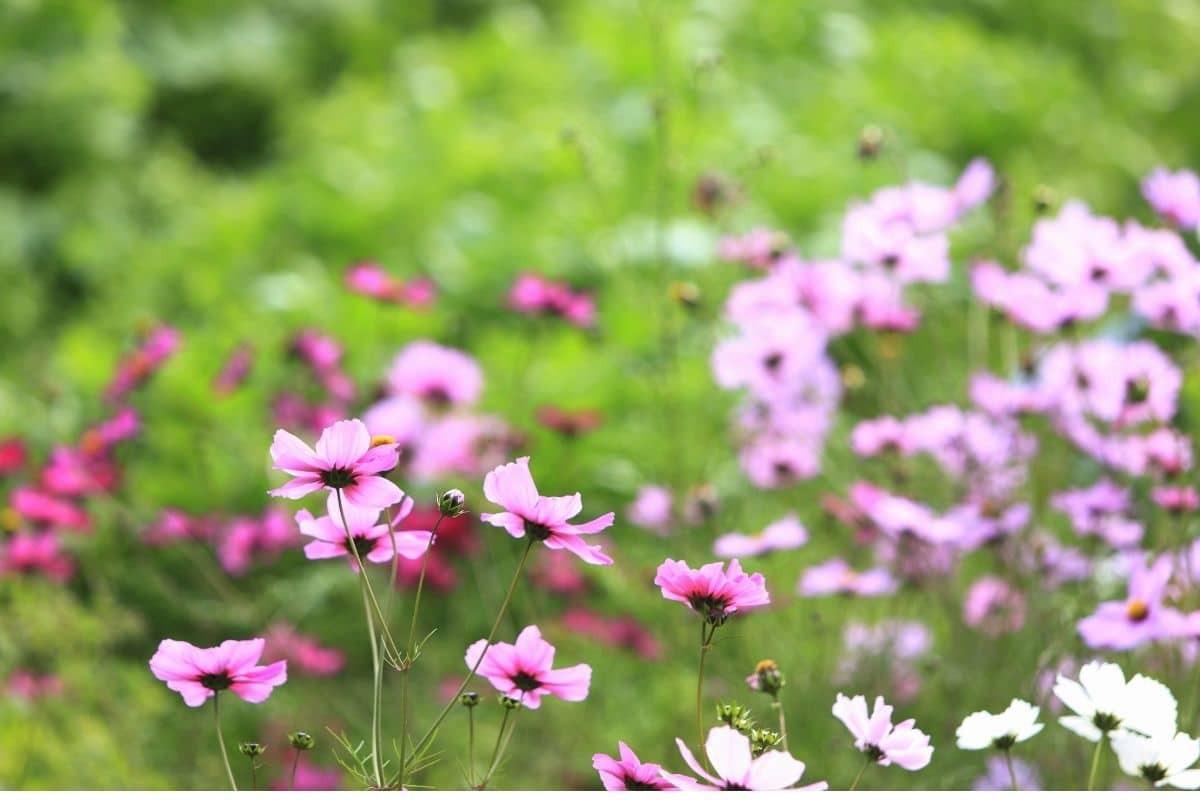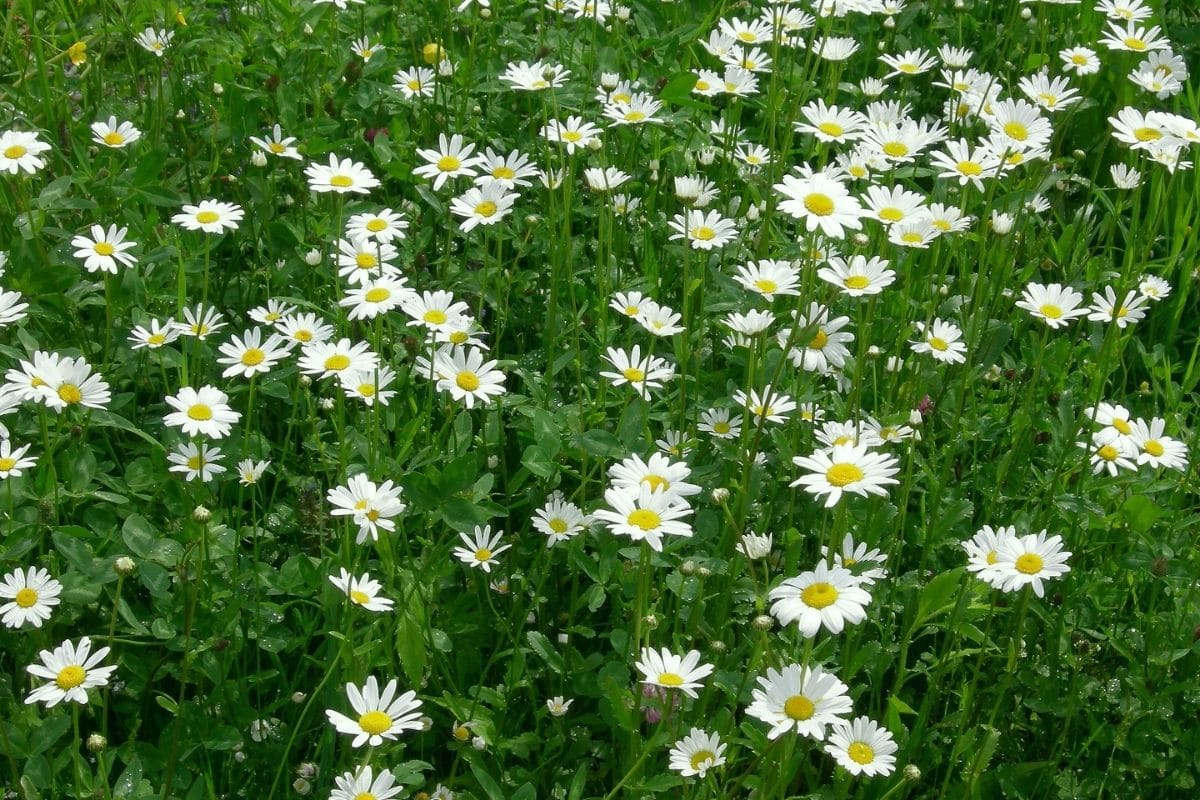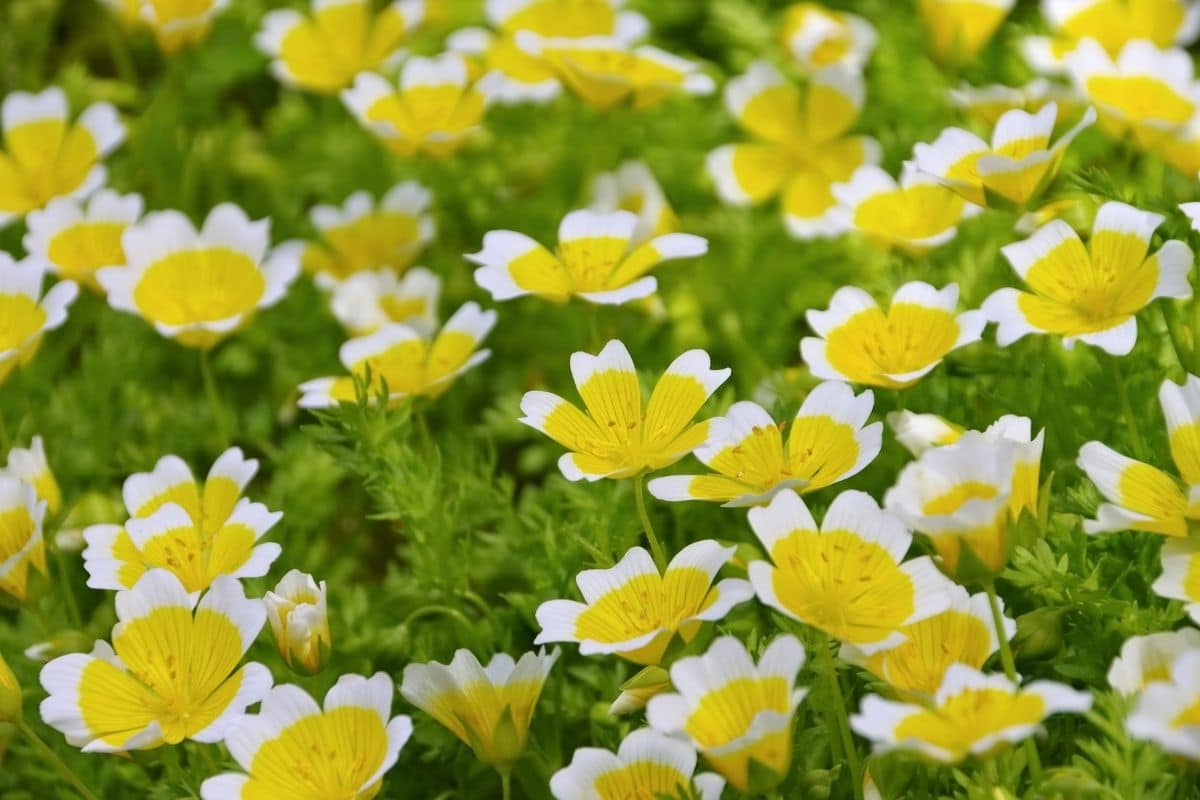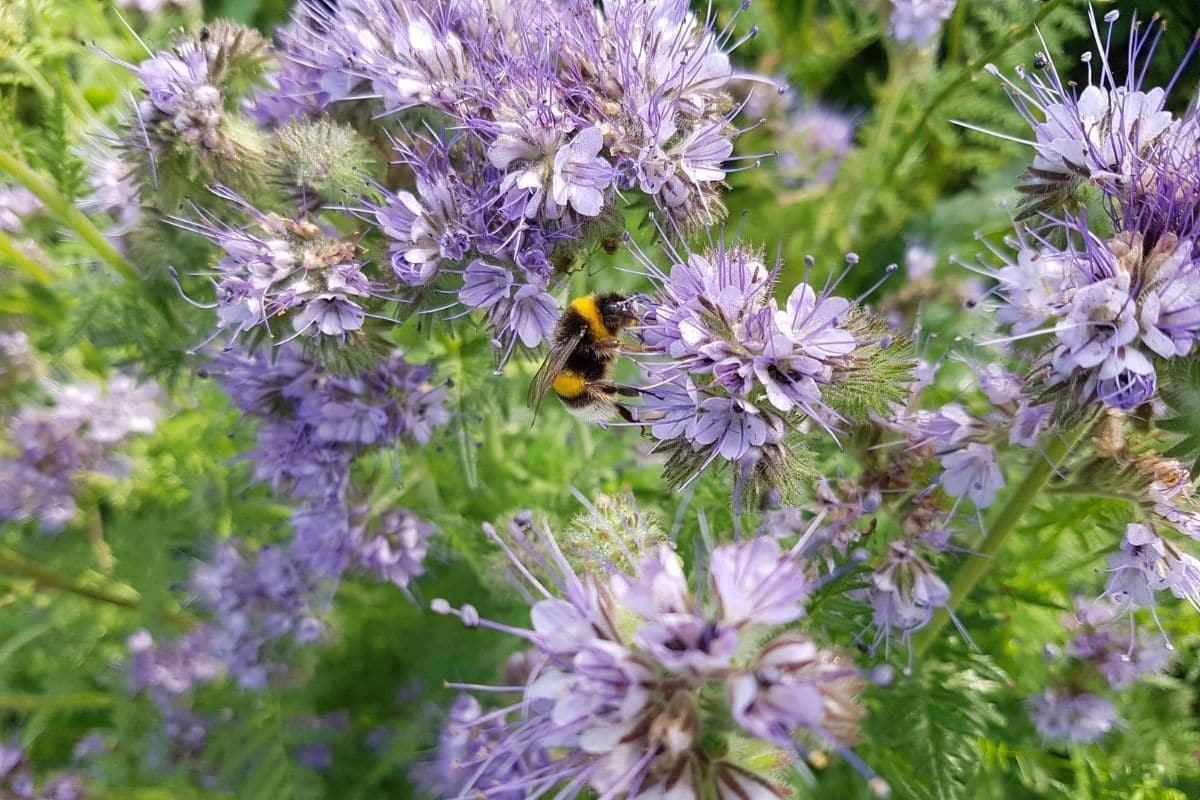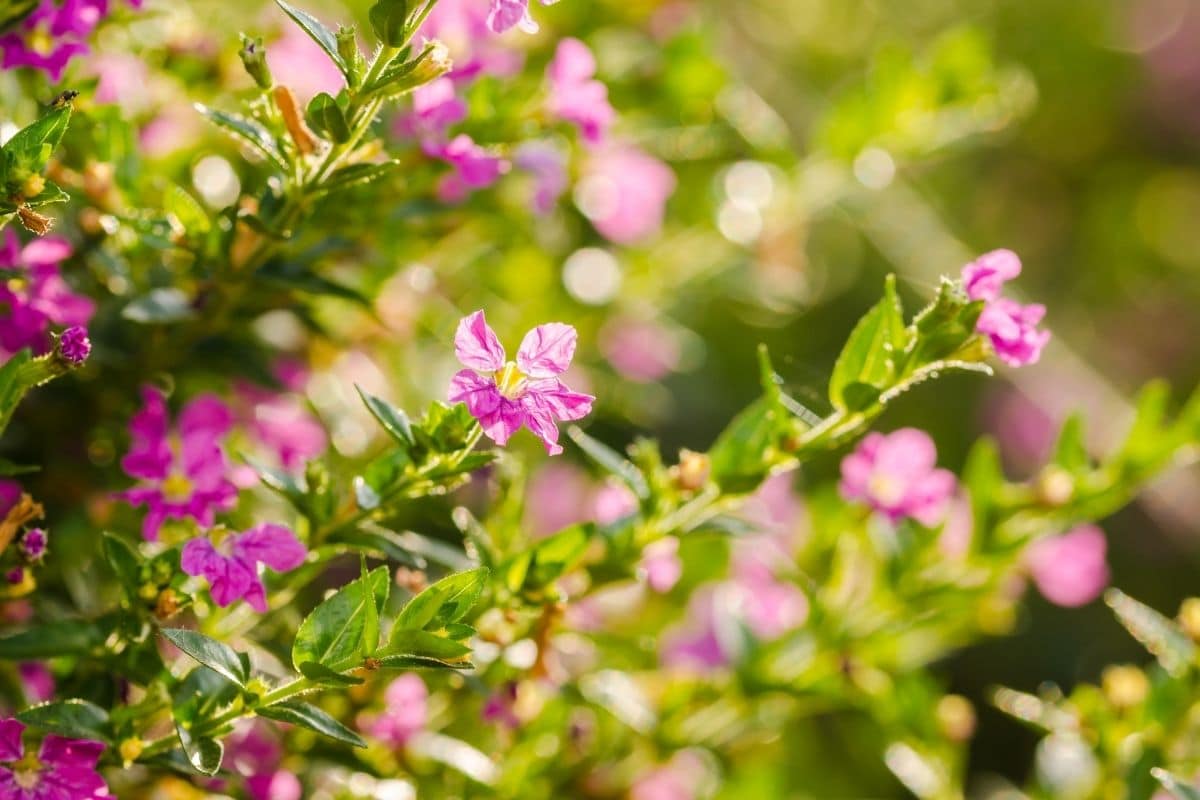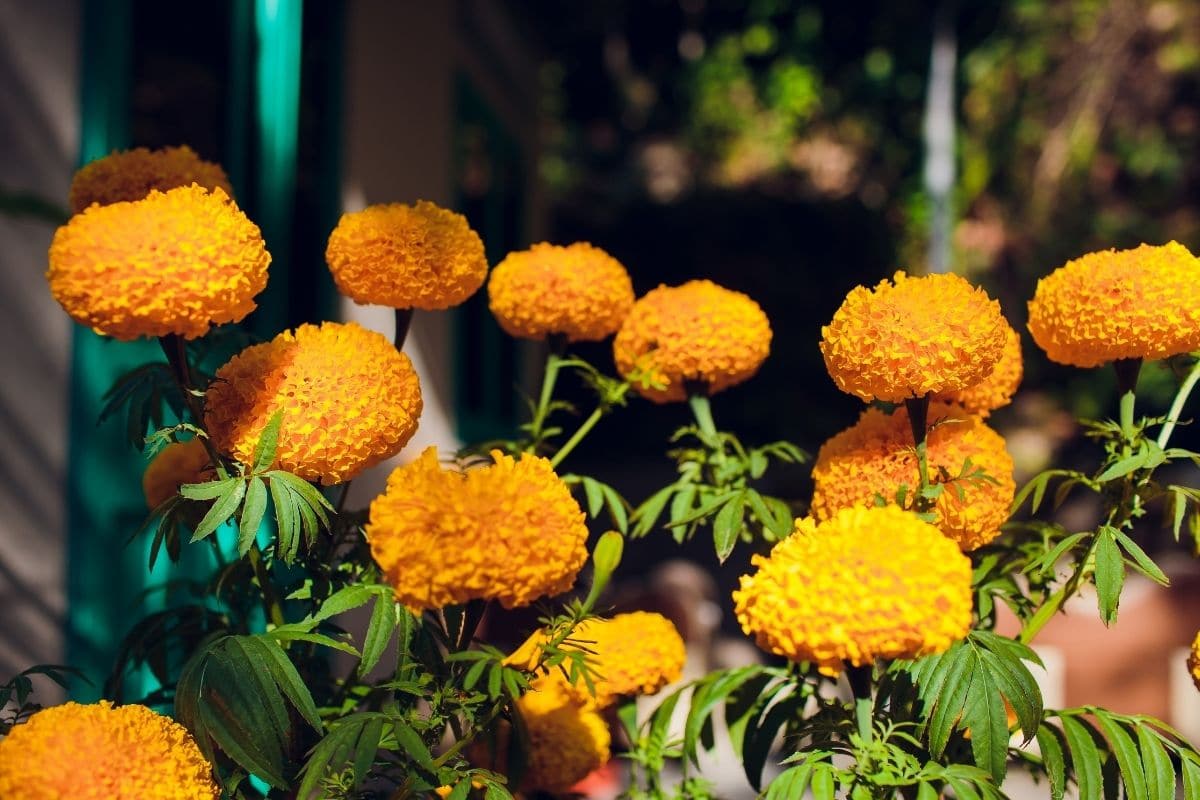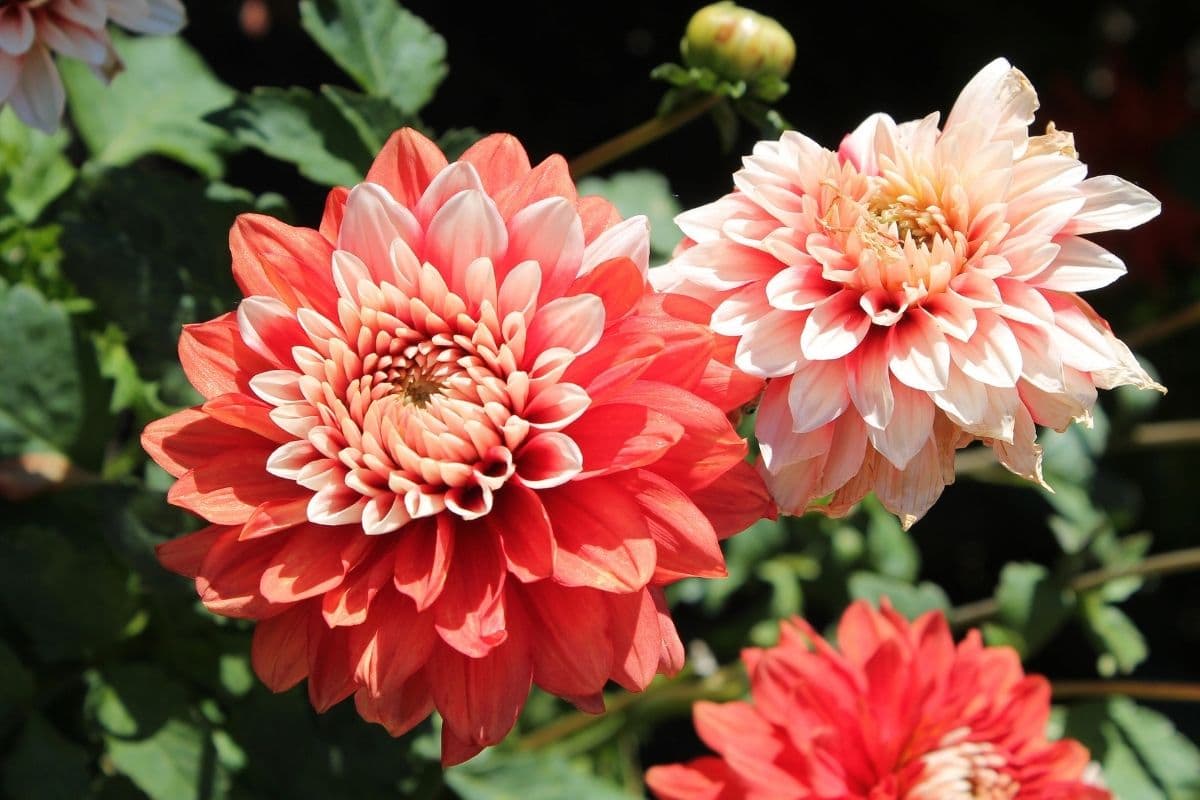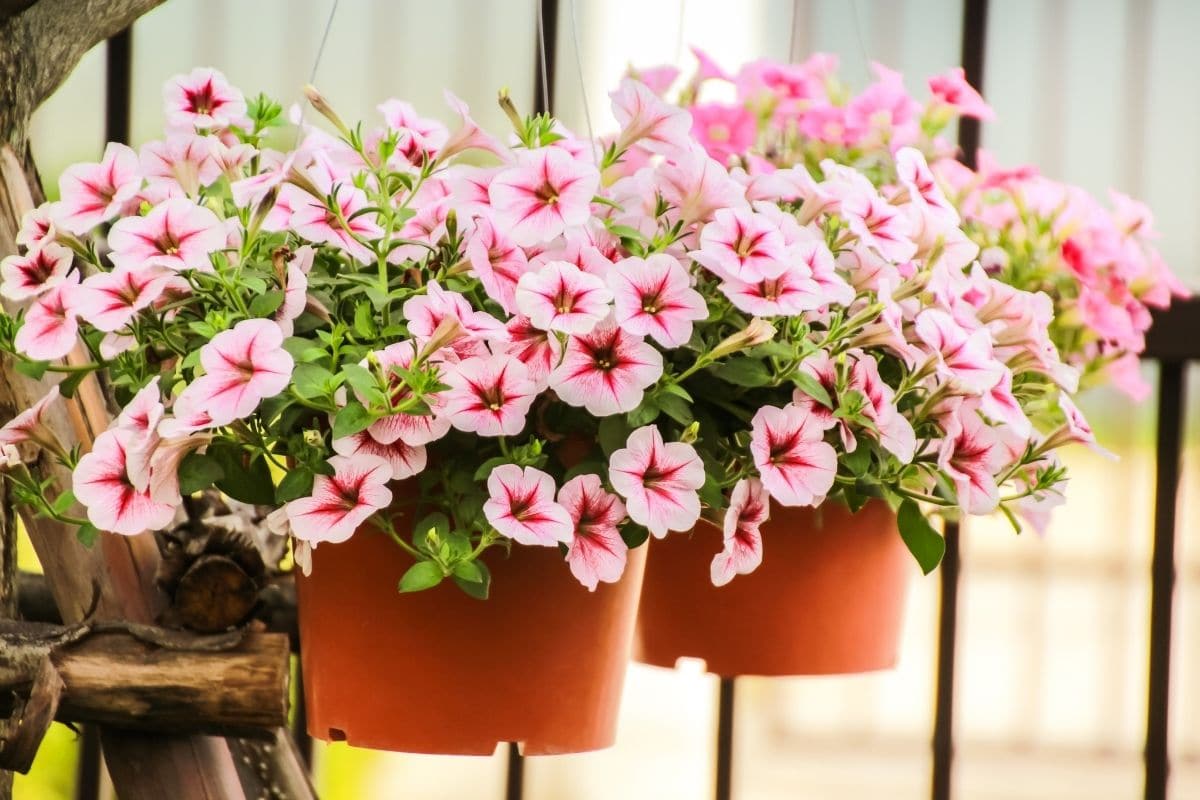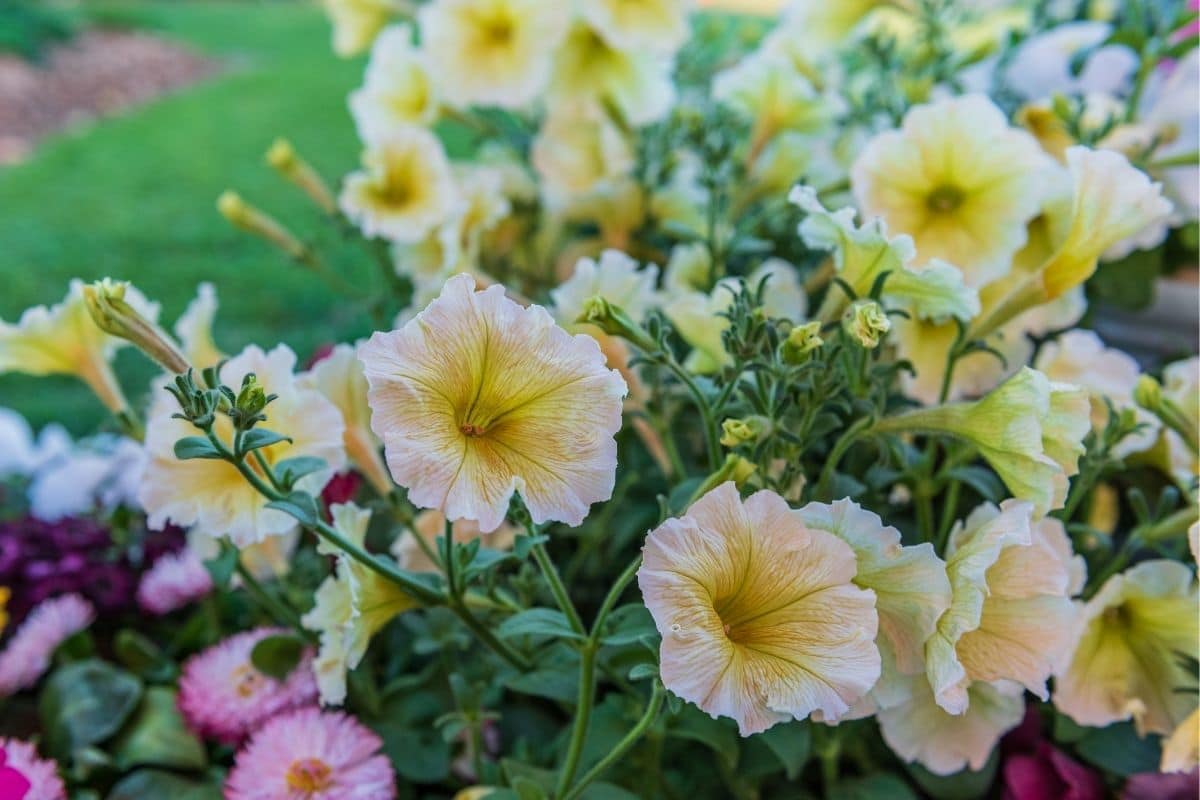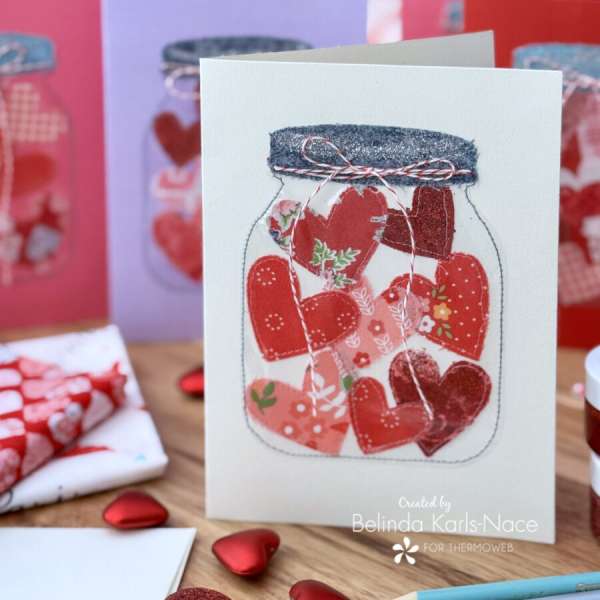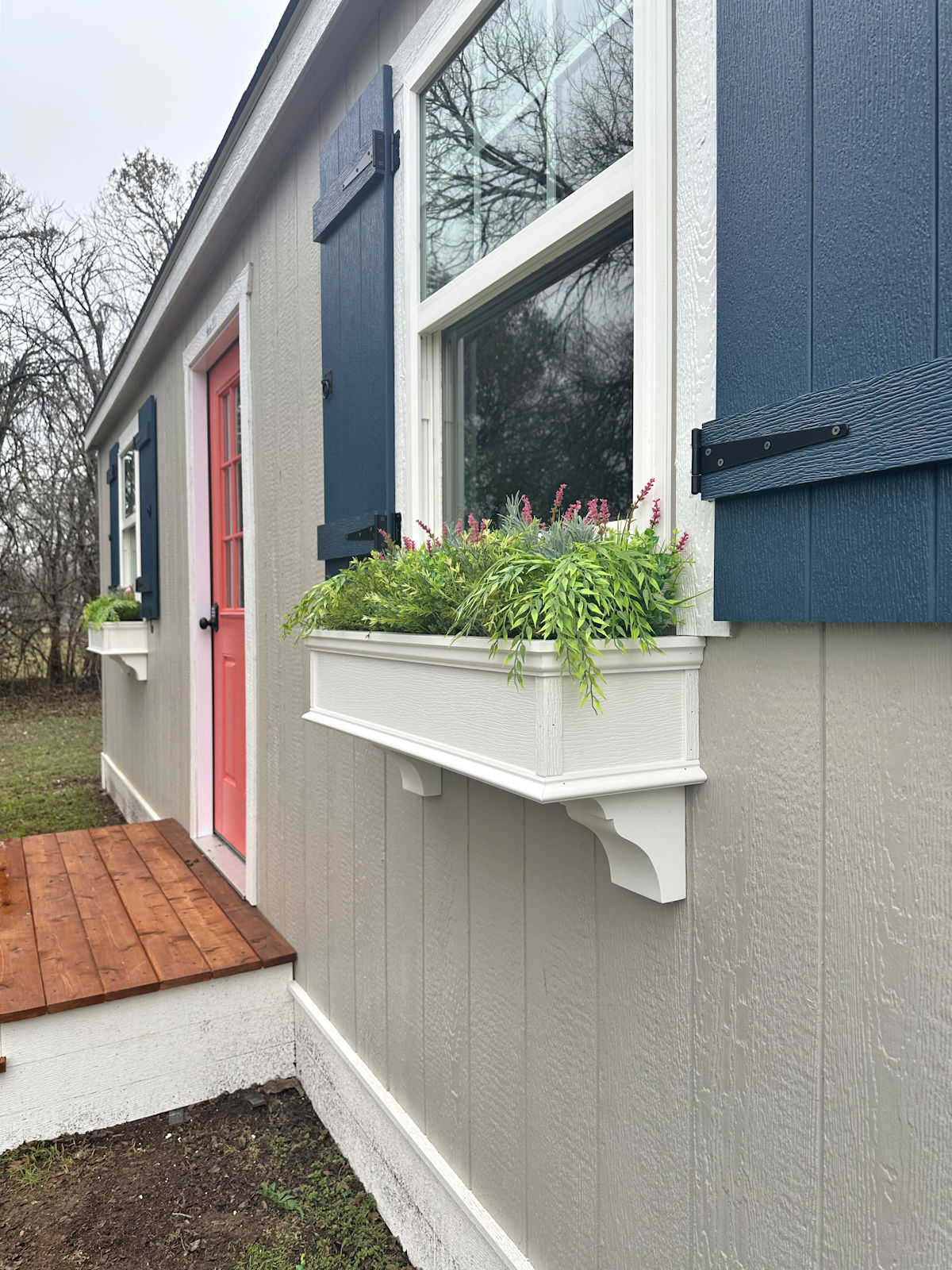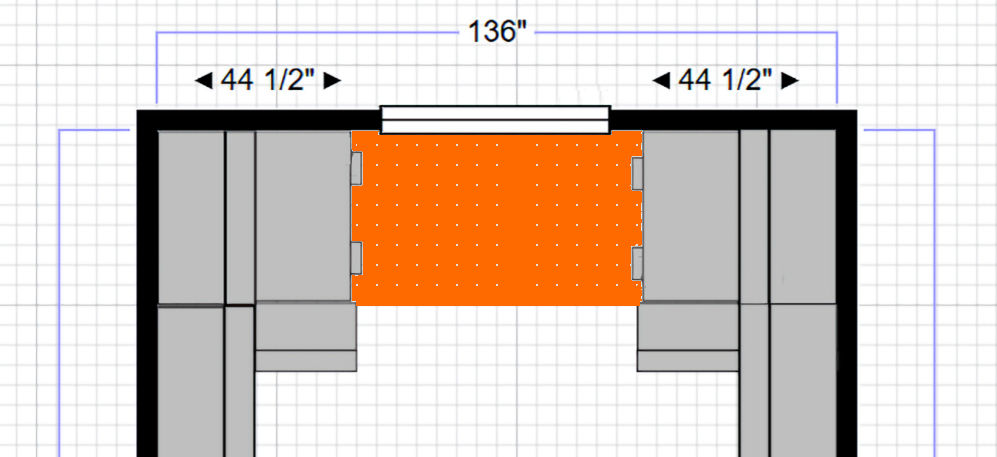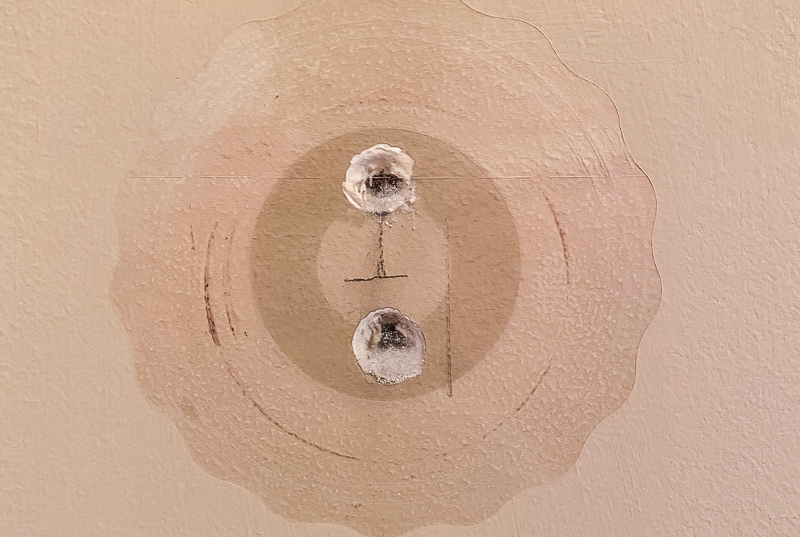When you’re planning out your gardens for the year, you might think that you need to have clearly defined spaces for each type of plant. Vegetables go here, flowers go here, and shrubs go here….right?
Wrong.
A smart planting technique involves planting flowers inside your vegetable garden. Not only will it look spectacular, but growing flowers among your vegetables has a number of benefits, too.
Here are a few flowers you can plant directly in the vegetable garden – as well as reasons why you should consider doing so.
Flowers You Can Plant Into Your Vegetable Garden
Create a gorgeous living garden filled with your favorite flowers and vegetables all together in one space! Imagine the beauty you can create in a variety of beds around your home. Enjoy a large garden harvest and some beautiful low-maintenance flowers all together for an experience that satisfies the soul.
1. Nasturtiums
Get seeds: Seedsnow, Amazon
Nasturtiums are not only easy to grow in most climates, but they are also incredibly beneficial when planted near tomatoes and cucumbers. They can repel cucumber beetles, aphids, squash bugs, whiteflies, and more.
2. Roses
Some gardeners grow roses or geraniums among chives. They can discourage both aphids and beetles with their strong perfume. If you are looking for roses to add to your garden, I love the Lavender Veranda roses, as well as the Dublin Bay, rose.
3. Chamomile
Get seeds: Botanical Interests, Seedsnow
Chamomile is an herb that grows incredibly well in the vegetable garden. It can attract all kinds of beneficial insects, particularly those that are beneficial for cabbage and other brassicas. You can also chop it up and leave it in your raised beds to decompose over the winter since it can help enrich the soil.
4. Calendula
Get seeds: Botanical Interests, Seedsnow
Also known as “pot marigold,” this flower is technically unrelated to the common marigold, which you’ll learn more about below. The calendar is perfectly suited for growing in a vegetable garden. It will continue flowering all through the summer months as long as you pluck the seed heads on a regular basis. Plus you can save the seeds!
5. California Poppy
Get seeds: Botanical Interests, Seedsnow
The California poppy is a perennial flower that blooms quickly and grows well in clay soil. In fact, it’s prized for its ability to “mine” the soil, or loosen it up so it’s less compacted. It also attracts beneficial insects with its bright blooms and lacy, foot-tall foliage.
6. Borage
Get seeds: Botanical Interests, Seedsnow
Borage is an herb, but it produces lovely flowers and can repel both cabbage worms and hornworms. For whatever reason, many gardeners use borage to help plants increase their resistance to pests and diseases, too.
7. Marigolds
Get seeds: Botanical Interests, Seedsnow
Do a quick Google search on the best flowers to plant among your vegetables, and you’re almost guaranteed to see marigolds come up at least once! These flowers are perhaps the most well-known for their ability to repel insects. Mexcian marigolds are destructive to many insects, while French marigolds can kill nematodes and repel whiteflies. Just be careful about where you plant them, as they can also serve as trap crops for snails and spider mites.
8. Lavender
Get seeds: Botanical Interests, Seedsnow, Nature Hills
Also technically an herb, lavender does an excellent job at repelling pests like moths, fleas, and whiteflies in your garden. Plus, it smells fantastic and can be harvested for use in teas and other remedies, too.
I love this Grosso lavender. It’s a wonderful plant and smells amazing! You might also want to plant French lavender or even Hidcote lavender.
9. Sweet Pea
Get seeds: Botanical Interests
The delicate sweet pea is another flower that can be planted directly in the vegetable garden. Although they aren’t edible, as the seeds are poisonous, these plants are popular among other critters that might frequent your garden – including pollinators.
Don’t worry about planting them near your edible crops, like peas, either – the two are not related, so they won’t cross-pollinate.
10. Sweet Alyssum
Get seeds: Botanical Interests, Seedsnow
Sweet alyssum is a low-growing groundcover that is incredibly popular in landscaping for its pleasant scent. It grows well as a border in most vegetable gardens, and with tons of colors and cultivars to choose from, you won’t have any problem growing this plant in yours, either. It works as an effective mulch, too, as its roots are shallow and keep the soil in place.
11. Sunflowers
Get seeds: Botanical Interests, Seedsnow, Nature Hills
Sunflowers will not only be the largest flowers you have in your garden, but they’ll also be some of the most beautiful! These gorgeous blooms are perfect for attracting beneficial pollinators, like bees and butterflies, and they can also keep aphids away from your plants, too.
12. Zinnias
Get seeds: Botanical Interests, Seedsnow
You can find zinnias in just about any color and you’ll bring serious benefits to your vegetable garden by growing them there. Zinnias are annuals but produce show stopping five-inch flowers. They attract butterflies and can help repel pests, too.
13. Cosmos
Get seeds: Botanical Interests, Seedsnow
Cosmos are remarkably easy to grow and each plant yields hundreds of daisy-like flowers, starting first in midsummer but continuing all the way until frost. The plants grow up to five feet tall and are popular with butterflies, bees, and hummingbirds.
14. Daisies
Get seeds: Seedsnow, Nature Hills
Like chamomile, the daisy, also in the same family, attracts a variety of insects. Some of the most common insects it attacks include hoverflies and predatory wasps.
I personally love the Daisy May Shasta Daisy, but you can also plant the Becky Shasta Daisy, the Banana Cream Shasta Daisy, or the Snow Lady Shasta Daisy.
15. Poached Egg Plant
Although it has an odd name, the poached egg plant is great for growing along the edges of raised beds. It can attract bees and hoverflies and is also wonderful when it comes to restoring fertility to the soil.
16. Phacelia
Get seeds: Seedsnow
This beautiful flower overwinters well, making it a great perennial flower to grow among your vegetables. Just mark its spot in the fall so you don’t accidentally dig it up come spring! It produces beautiful lavender-colored flowers and offers a valuable source of nectar to bees.
17. Mexican Heather
Mexican heather is another beautiful plant that does a great job at attracting beneficial pollinators, like bees. Also known as false heather, this plant can be grown in the south and is a perennial that is hardy in zone 9 and above.
18. Chrysanthemums
Get seeds: Seedsnow
With large, beautiful flowers in shades of yellow, pink, and white, chrysanthemums are incredibly helpful when it comes to repelling pests in a vegetable garden. Some people even use “mums” to kill Japanese beetles and root nematodes.
19. Dahlias
Get plants: Nature Hills
Dahlias can be grown just about anywhere, and since they’re found in a variety of colors and shapes, they’re perfect for flower and vegetable gardens alike. They can repel nematodes, too. There are so many different colors and varieties, I love the dahlia! It’s a great addition to any garden!
20. Petunias
Get seeds: Botanical Interests, Seedsnow, Nature Hills
Petunias are lovely to look at and they can repel a long list of pests, including aphids, leafhoppers, asparagus beetles, tomato hornworms, and more. Plus, they come in several colors, so you won’t have trouble finding the perfect blooms to suit your fancy!
21. Four o’Clock Flowers
Get seeds: Seedsnow
Four o’clock flowers aren’t the most common blooms you’ll see in a garden – definitely not a vegetable garden!- but they are great for gardens because they can help prevent Japanese beetles. These flowers can be poisonous to pets and people, though, so make sure you don’t plant them where they might be confused for edible crops.
Why You Should Grow Flowers in the Vegetable Garden
There are plenty of excellent reasons to grow flowers in your vegetable garden. Just to name a few, flowers can loosen up compacted soil and attract tons of beneficial pollinators. There are all kinds of vegetables, including squash and cucumbers, that have a hard time setting fruit if they aren’t adequately pollinated.
Attracting these beneficial insects can often do the trick! Whether you plant them in rows or use some of these spilled flower pot methods, they are a great addition to your garden!
Some flowers attract predatory insects that prey upon common garden pests. Others serve as living mulches, while still more help improve the soil’s ability to retain moisture.
And let’s not forget – flowers add a ton of beauty and elegance to your vegetable garden, too! So the next time you’re trying to figure out what to plant between those rows of cucumbers, consider giving a few of these lovely flowers a try.

